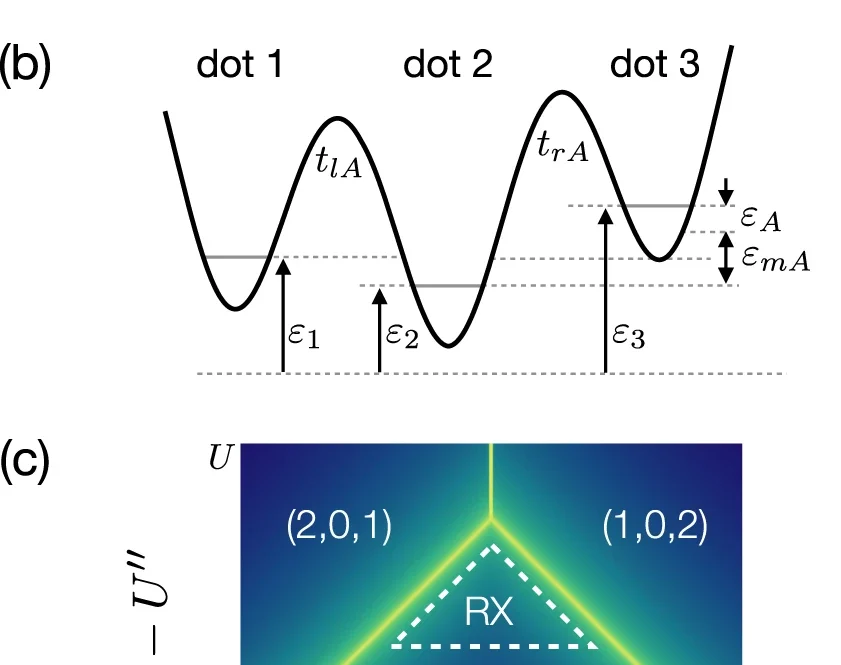Semiconductor quantum dots represent a promising platform for quantum computing due to their potential for scalability, coherence, and compatibility with existing microelectronics. While significant progress has been made with single-qubit operations, implementing high-fidelity two-qubit gates remains a critical bottleneck in achieving universal quantum computation.
This research focuses on exchange-only (EO) spin qubits encoded in the decoherence-free subspace of three electron spins (S = 1/2, Sz = -1/2), which offer immunity against collective decoherence and enable fast, all-electrical control. Researchers have investigated capacitive coupling between two triple quantum dot systems as a mechanism for implementing two-qubit operations.
This work demonstrates the theoretical existence of multiple two-qubit sweet spots (2QSS) in the parameter space of capacitively coupled EO qubits. These sweet spots represent flat regions in the energy landscape that provide protection against parameter fluctuations caused by charge noise—a primary source of decoherence in solid-state environments.
For the first time, this study reports exact gate sequences for CPHASE and CNOT operations based on capacitive coupling. Unlike exchange-based gates that require multiple steps, this approach implements non-local gates in a single time interval while minimizing leakage problems. The team has calculated gate fidelities and operation times assuming 1/f noise, providing crucial insights on noise thresholds necessary for fault-tolerant operation.
This analysis covers two prominent EO qubit implementations: the resonant exchange (RX) and always-on exchange-only (AEON) architectures. They identified optimal working points where two-qubit sweet spots coincide with single-qubit sweet spots, offering enhanced protection against noise during both types of operations.
The capacitive coupling approach offers several advantages over exchange coupling, including longer interaction range and less stringent requirements for quantum dot addressability. By identifying conditions where parameter sweet spots exist for single-qubit energy splittings (εm) and tunnel couplings (tl, tr), they have established a pathway toward high-fidelity quantum operations in semiconductor systems.
These findings address a significant knowledge gap in semiconductor quantum computing and provide a potential route toward the realization of fault-tolerant quantum computation in a scalable solid-state platform.
npj Quantum Information, Published online: 16 July 2021; doi:10.1038/s41534-021-00449-4



